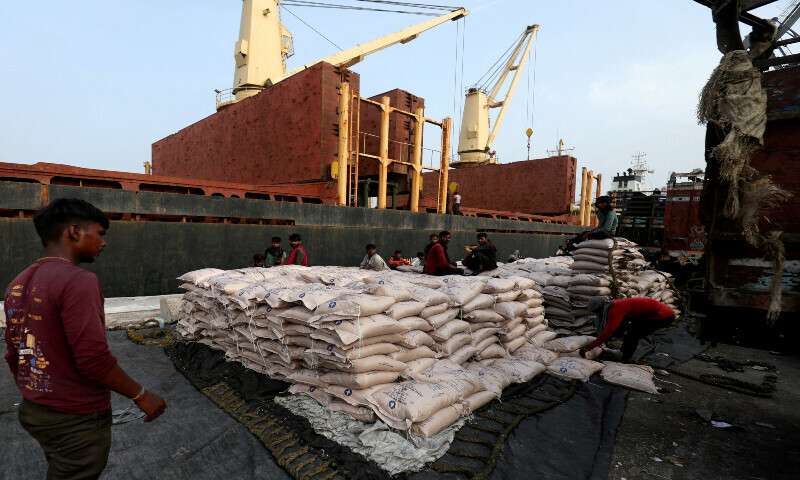India, the world’s second-largest sugar producer, is set to allow the export of 1 million metric tonnes of sugar during the 2024-25 season. This significant move comes as a response to the surplus sugar stocks that mills have accumulated in the country, with the goal of assisting the local industry and stabilizing domestic prices. The decision has drawn attention not only within India but across global markets, as it could impact sugar prices worldwide.
In this article, we explore the details behind India’s decision to approve sugar exports, its implications on the sugar market, and what it means for local and global prices. We will also examine the factors contributing to the decision and its potential impact on India’s sugar production in the near future.
Why India is Allowing Sugar Exports in 2024-25
Export Quotas: A Response to Surplus Stocks
India’s sugar industry has experienced a surplus production of sugar over the last few years. The country’s sugar mills have seen an increase in stock levels, prompting the government to approve an export quota of 1 million metric tonnes of sugar. This will help the mills clear some of the accumulated sugar stocks and potentially stabilize domestic sugar prices, which have been trending lower.
The Indian government’s decision to approve this limited export quota is crucial as it ensures sugar mills have access to global markets, which can absorb surplus stocks and provide much-needed liquidity to local mills. As of now, domestic sugar prices in India have reached their lowest point in one and a half years, causing concern among producers. The move to allow exports is intended to provide relief to these mills and help recover lost revenues due to lower domestic prices.
Impact on Sugar Prices
The approval for sugar exports could have a dual effect on the market. First, it may exert downward pressure on global sugar prices. Since India is one of the largest sugar producers in the world, any additional supply from India could potentially affect the supply-demand dynamics in global markets. Specifically, sugar futures in the international market, such as those listed on the New York Board of Trade (NYBOT), might experience downward pressure as a result of increased supply from India.
Second, the export quota is expected to prop up local prices in India by reducing the surplus stocks in the country. In turn, this could benefit sugar mills, which have been struggling with low prices and reduced profit margins.
What This Means for Indian Sugar Mills
India’s sugar industry has long been a key player in the global market. With its large sugar production base, India consistently ranks as one of the top exporters of sugar. However, domestic production often fluctuates due to variations in crop yields, weather conditions, and government policies. This year, India’s sugar production is forecast to fall below the consumption rate for the first time in eight years, creating an interesting paradox.
Sugar mills in India, particularly those in the states of Maharashtra, Karnataka, and Uttar Pradesh, account for more than 80% of the country’s total sugar production. However, these regions are experiencing reduced sugarcane yields due to various factors, including adverse weather conditions. This reduction in sugar production is expected to fall to around 27 million tonnes, down from last year’s 32 million tonnes, and below the country’s annual consumption of more than 29 million tonnes.
For mills, the reduction in production and low prices have created a financial strain. Allowing 1 million tonnes of exports is seen as a lifeline for these mills, providing them with an opportunity to recover and avoid losses by accessing international markets.
India’s Sugar Export Markets: Who Will Buy the 1 Million Tonnes?
India’s primary sugar export markets include countries like Indonesia, Bangladesh, and the United Arab Emirates (UAE). These markets have traditionally been strong importers of Indian sugar, particularly because of the competitive pricing and high-quality products available.
While the Indian sugar export market has seen fluctuating demand in recent years, the 1 million tonne export quota is expected to maintain India’s presence as a significant player in global sugar trade.
Countries in Southeast Asia and the Middle East have increasingly relied on India as a key supplier of sugar, given that it has competitive prices and the ability to produce large quantities. With the approval of this export quota, India aims to bolster its trade relationships with these countries and ensure a steady stream of revenue for sugar mills in the country.
The Challenges: Lower Cane Yields and Production Decline
Cane Yield Issues in Key Producing States
India’s sugar production faces challenges on the ground, especially in its key sugarcane-producing states. Both Maharashtra and Karnataka—two of the largest sugar-producing regions—have reported lower cane yields this year due to several factors, including poor rainfall and other adverse weather conditions. This has had a significant impact on the overall sugar output in the country.
Sugarcane yields directly affect the total sugar production, as higher yields translate to more sugar extracted from the same amount of land. With the anticipated decline in yields, trade houses have reduced their output estimates for the current 2024-25 season.
Reduced Sugar Production Expected in 2024-25
India’s overall sugar production in the 2024-25 season is expected to fall to around 27 million tonnes. This reduction represents a significant decrease from last year’s production level of 32 million tonnes, which has raised concerns about the supply of sugar to meet domestic consumption needs. The current production forecast is lower than the estimated annual sugar consumption of 29 million tonnes, which may leave a supply gap.
The reduction in domestic production could potentially have ramifications for India’s sugar mills and their ability to meet both domestic and export demands. However, by allowing limited exports, the government has ensured that there is a strategy in place to support mills while also managing the supply-demand equation.
India’s Role as a Leading Global Sugar Exporter
India has consistently ranked as one of the world’s top sugar exporters. Over the past five years, it was the world’s No. 2 sugar exporter, with an average annual export volume of around 6.8 million tonnes. However, in the 2023-24 marketing year, India refrained from exporting sugar due to concerns about local supply shortages and rising domestic prices.
With the approval of this export quota for the 2024-25 season, India is expected to return to the global market with a smaller but still significant volume of sugar exports. This move aims to strike a balance between satisfying domestic consumption needs and fulfilling international demand.
Looking Ahead: India’s Sugar Industry in 2025 and Beyond
As India navigates through reduced sugar production and fluctuating prices, the future of its sugar industry looks promising, provided that next year’s production is stronger, as predicted. With a more favorable environment for growing sugarcane and improved yield projections, the 2025-26 season may see a rebound in production, potentially boosting exports and improving profitability for mills.
Deepak Ballani’s Insights on the Future of India’s Sugar Industry
According to Deepak Ballani, Director-General of the Indian Sugar and Bio-energy Manufacturers Association, the export approval is expected to provide relief to the sugar mills, which are currently struggling with low local prices. Ballani expressed optimism about next year’s production, noting that it is likely to be much stronger, which would benefit the entire industry. With growing demand from export markets and more favorable production conditions, India’s sugar sector is poised for a potential recovery in the years ahead.
FAQs about India’s Sugar Export Decision
1. Why is India allowing sugar exports in 2024-25?
India is allowing exports of 1 million tonnes of sugar to help mills clear surplus stocks, stabilize local prices, and ensure a steady flow of revenue for the sugar industry.
2. What is the impact of India’s sugar export quota on global sugar prices?
The 1 million tonne export quota could exert downward pressure on global sugar prices, increasing supply in the market and potentially reducing prices.
3. Which countries are India’s primary sugar export markets?
India’s primary sugar export markets include Indonesia, Bangladesh, and the United Arab Emirates (UAE).
4. How is India’s sugar production expected to change in 2024-25?
India’s sugar production in 2024-25 is expected to fall to 27 million tonnes, down from 32 million tonnes in the previous season, due to lower cane yields in key producing states.
5. Will India’s sugar industry recover in the future?
Yes, the Indian sugar industry is expected to recover in 2025 and beyond, with stronger production forecasts and favorable conditions for growing sugarcane.
Conclusion
India’s decision to approve the export of 1 million tonnes of sugar in 2024-25 is a strategic move aimed at stabilizing local prices and ensuring the economic health of the country’s sugar mills. While the reduced production forecast for the current season poses challenges, the export quota is expected to provide much-needed support to the industry. By tapping into global sugar markets, India can maintain its position as one of the world’s leading sugar exporters, balancing the needs of domestic consumption with international demand.

